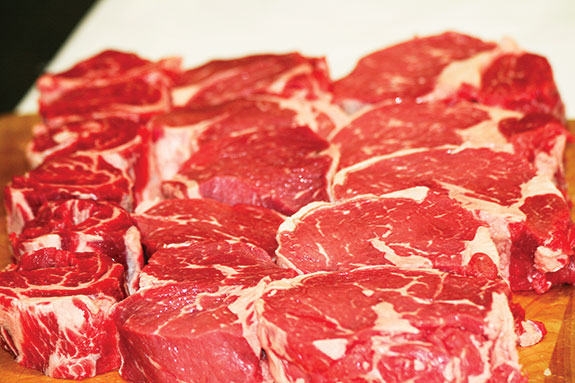Some of the information is presented by qualified scientists and is very factual, yet a large amount comes from biased journalists and special-interest groups who do not supply scientific references to support their statements.
So what is the truth?
Essential fatty acids
Essential fatty acids (EFAs) in human nutrition are the ones we can’t synthesize in our body. EFAs are referred to as good fats and are polyunsaturated.
The other good fats are monounsaturated, and like polyunsaturated fats, they decrease health risks. The bad fats are saturated and increase health risks. This is especially true of the trans fats.
As explained by Austin Healy at Vanderbilt University, there are two types of essential fatty acids – omega 3 and omega 6.
There are three major types of omega 3 fatty acids ingested with food and used by the body: alpha-linolenic acid (ALA), eicosapentaenoic acid (EPA) and docosahexaenoic acid (DHA).
When consumed, the body has limited ability to convert ALA to EPA and DHA, which are more readily used.
Linoleic acid is the primary omega 6 acid, which is converted into gamma linolenic acid (GLA). EPA from the omega 3 group, along with GLA, forms eicosanoids in the body.
Omega 6 fatty acids play an important role in a vast number of biological functions.
Healy says, “Research indicates that omega 3 acids reduce inflammation and help prevent certain chronic maladies such as heart disease, stroke, arthritis, skin disorders, diabetes, high cholesterol, high blood pressure and depression.
Omega acids have also been shown to help prevent breast, colon and prostate cancer. These essential fatty acids are highly concentrated in the brain and appear to be particularly important for cognitive and behavioral function.”
Omega 9 or oleic acid is monounsaturated and is another good fat. It is necessary for human health, yet it is termed non-essential because the body can manufacture it from saturated fatty acids.
Oleic acid comprises 55 to 85 percent of olive oil and has been found to decrease low-density lipoproteins (LDLs) and increase high-density lipoproteins (HDLs).
Most of us know LDL as cholesterol LDL, or the bad cholesterol, and HDL as cholesterol HDL, or the good cholesterol.

Is beef good or bad?
The Harvard School of Public Health listed foods high in good fats as vegetable oils, nuts, seeds and fish.
Their list of foods high in bad fats include red meat, butter, cheese, ice cream and processed foods made with trans fat from partially hydrogenated oil.
Red meat is on the bad fats list of many organizations.
In the case of beef, these organizations did not do enough study of existing research data before compiling their lists.
Saturated fats occur primarily in layers around the outside edges of beef cuts. This fat is normally separated from the meat by the processor before it reaches retail outlets.
“Marbled fat is composed of fat cells that lie between muscle fibers,” states Stephen Smith, a meat biologist with Texas A&M University.
“This type of fat is good for consumer health because as marbling increases, oleic acid (omega 9) increases. In addition to reducing HDL cholesterol, oleic acid depresses symptoms associated with type II diabetes.”
In a study at Texas A&M, a group of 10 men were fed ground beef high in saturated fatty acids (SFA) for five weeks.
During this period, their LDL-to-HDL cholesterol ratio increased, which meant the LDL level became higher than the HDL.
Afterwards, the men were fed ground beef high in monounsaturated fatty acids (MUFA) for five weeks. During this period, their LDL-to-HDL ratio was depressed, in which the HDL level was higher than the LDL.
“High-SFA ground beef strongly depressed LDL particle diameters in this study,” reports Smith.
“These results were reversed by feeding the high-MUFA ground beef. Large LDL particles are better than small dense LDL particles because they are less likely to clog arteries.”
Previous research has shown that high-SFA ground beef decreases HDL cholesterol and LDL particle diameters.
It has also shown high-MUFA ground beef to increase HDL cholesterol and decrease triglycerides, a form of fat made in the body.
People with high triglycerides often have a high total cholesterol level, including a high LDL level and a low HDL level.
“In a National Cattlemen’s Beef Association study, a group of 27 men were rotated through three groups of ground beef patties with different concentrations of oleic acid,” says Smith.
“These men consumed five 114-gram beef patties per week for five weeks over three phases.
As oleic acid concentration increased in the ground beef, concentration of saturated fatty acids and trans-fatty acids in the ground beef decreased.
HDL cholesterol in the men increased linearly with oleic acid content in the ground beef, but there was no effect of the test ground beef on LDL cholesterol.”
Only mid-MUFA and high-MUFA ground beef increased LDL diameter in this study. Decreased HDL diameter effect was independent of fatty acid composition.
A slight decrease in glucose was noticed in the men and there was a linear effect of decreased insulin with increasing MUFA.
Triglycerides and type II diabetes symptoms were decreased, especially in men fed the high-oleic acid ground beef.
This research has shown that marbled lean beef can decrease risks of chronic disease.
Marbling also helps improve beef tenderness and taste, which means a nice, juicy steak is not only pleasing to the taste but can also be beneficial to our health. ![]()
Robert Fears is a freelance writer based in Texas.
PHOTOS
TOP: Studies show that marbled lean beef has advantages for decreasing risks of chronic disease.
BOTTOM: Marbled fat is a type of fat good for consumers since it increases amounts of oleic acid, or omega 9 fatty acid.Photos by staff.






